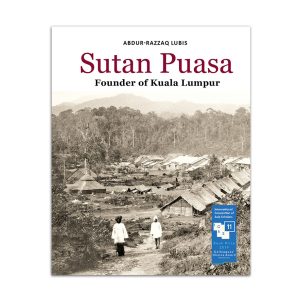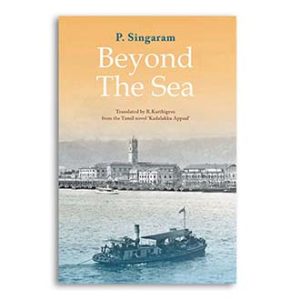In August 1883 massive volcanic eruptions destroyed two- thirds of the island of Krakatau, in the Sunda Strait between Sumatra and Java. A tsunami wreaked havoc in the region, and shock waves were recorded around the world. Although the official death toll stood at 36,417, some sources estimate that it was three times that number, that closer to 120,000 lost their lives. Ash from the eruption affected global weather patterns for years. A smaller volcanic mountain known as Anak Krakatau (Child of Krakatau) emerged in 1928; it is still active today.
The only surviving account of the event written by a Malay eyewitness – Syair Lampung Karam, by Muhammad Saleh – is presented here for the first time in an English translation, Krakatau of Lampung Submerged. A resident of southern Sumatra, Muhammad Saleh wrote his account in the form of a syair, a classical Malay rhymed poem. The syair is a distinct Malay literary genre that had multiple functions, including religious instruction and the dissemination of news. This long narrative poem sheds light on local responses to the widespread devastation in the region and enriches our knowledge of the Krakatau disaster.
Syair Lampung Karam appeared in four lithographed editions between 1883 and 1888, with four slightly different titles, published in Singapore. This book is based the last known edition, first published on 10 Safar 1306 AH (16 October 1888). It was translated from the Classical Malay by John H. McGlynn, based on the romanised transliteration by Suryadi and an essay on the syair verse form by Ian Proudfoot and Virginia Hooker. It contains the English translation, the romanised version in Indonesian as well as the original Jawi script.
An inscription of both the first and fourth editions reveal that the poem was composed by Muhammad Saleh in the Bangkahulu Quarter (later Bencoolen Street) of Singapore. Elsewhere in the poem, the author states that he had come from Tanjung Karang and that he witnessed the catastrophe caused by the terrible eruption. Very little else is known about the author; he may well have been one of those refugees who fled to Singapore carrying with them graphic memories of the disaster. Unfortunately, he does not say where he was born. In Lampung there is a story about a near-legendary character by the name of Muhammad Saleh (or Soleh), a religious leader who was instrumental in the building of the Jamik al-Anwar Mosque in Teluk Betung, Lampung, begun in 1839. (Destroyed by the eruption of Krakatau in 1883, the mosque was rebuilt later.) Muhammad Saleh was a migrant to Lampung from Boné, South Sulawesi. With his extensive knowledge of Islam, he became a prominent religious leader in Teluk Betung and later served as its regent.
The Tale of Lampung Submerged can be categorized as a “journalism poem” (syair kewartawanan), to borrow a term used by the classical Malay scholar Sri Wulan Rudjiati Mulyadi. This kind of syair typically contains eyewitness reports on real-life events, including events of historical importance and political developments, as well as natural disasters. Nevertheless, in this poem the author’s purpose was more to share the story about the natural disaster that he had experienced rather than to exploit it.
In the original poem comprising 375 four-line stanzas, Muhammad Saleh relates the catastrophic situation as it developed following the eruption of Krakatau. He graphically depicts what happened to numerous towns and villages in the South Sumatra region, where tens of thousands of people died as a result of the disaster. He describes how, even faced with a calamity of such proportions, people still helped each other. At the same time, he also gives a lively account of those who used the catastrophe to their own advantage by stealing the belongings of others. As a Muslim, and in accordance with the tastes of the day, he offered moral observations and pieces of advice, suggesting that in the face of such an immense natural disaster as the Krakatau eruption, people became increasingly devout and mindful of Almighty God. Perhaps it is a generalization, but in Indonesia, a country with a Muslim majority, people tend to view natural disasters as a warning or punishment from God.
For further reading, please see our newsletter.










